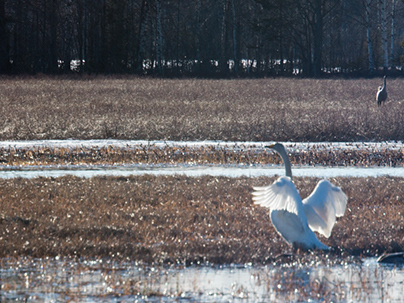The Great Wall at Mutianyu - 慕田峪
Mutianyu (Chinese: 慕田峪; pinyin: Mùtiányù) is a section of the Great Wall of China located in Huairou County 70 km northeast of central Beijing. The Mutianyu section of the Great Wall is connected with Jiankou in the west and Lianhuachi in the east. As one of the best-preserved parts of the Great Wall, the Mutianyu section of the Great Wall used to serve as the northern barrier defending the capital and the imperial tombs. First built in the mid-6th century during the Northern Qi, Mutianyu Great Wall is older than the Badaling section of the Great Wall. In the Ming dynasty, under the supervision of General Xu Da, construction of the present wall began on the foundation of the wall of Northern Qi. In 1404, a pass was built in the wall. In 1569, the Mutianyu Great Wall was rebuilt and till today most parts of it are well preserved. The Mutianyu Great Wall has the largest construction scale and best quality among all sections of Great Wall. Built mainly with granite, the wall is 7–8.5 metres high and the top is 4–5 metres wide. Compared with other sections of Great Wall, Mutianyu Great Wall possesses unique characteristics in its construction. Watchtowers are densely placed along this section of the Great Wall - 22 watchtowers on this 2,250-metre-long stretch. Both the outer and inner parapets are crenelated with merlons, so that shots could be fired at the enemy on both sides - a feature very rare on other parts of the Great Wall. The Mutianyu Pass consists of 3 watchtowers, one big in the centre and two smaller on both sides. Standing on the same terrace, the three watchtowers are connected to each other inside and compose a rarely seen structure among all sections of Great Wall. Besides, this section of Great Wall is surrounded by woodland and streams. The forest-coverage rate is over 90 percent. Today, this section of wall is open to visitors. There are three methods of ascent and four methods of descent to choose from. Besides utilizing 4000+ steps, visitors may also choose between a two-rider chairlift or four-rider gondola lift up from the foothills to the level of the wall, which runs along the ridges above. These lifts may also be used to descend. Another feature of the wall at Mutianyu is an alternate method of descent by single-rider personal wheeled toboggan. This allows single riders to descend from the wall to the valley on a winding metal track. Adjacent to the Mutianyu wall is its namesake village, which has been hailed by the Chinese government as a model village because of its rebirth largely thanks to tourism and glassware industries. Mutianyu Village is twinned with the village of Shelburne Falls in the U.S. state of Massachusetts. Due to its proximity to the Jiankou Great Wall, the Mutianyu-Jiankou trail is becoming one of the most popular Great Wall hikes. As Jiankou is in a state of disrepair, this hike combines the preserved condition of Jiankou's Great Wall with the classic restorative brickwork of Mutianyu. U.S. First Lady Michelle Obama and her daughters visited the Mutianyu section of the Great Wall in Beijing on March 23, 2014. Info:Wikipedia










